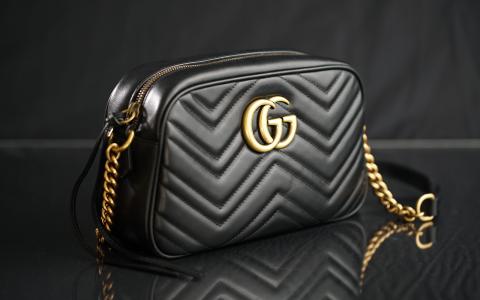
(Go BankingRates) - Wealthy investors don’t always put their money into stocks, bonds, or even cryptocurrency. Unconventional luxury investments often provide a better hedge against inflation. Designer bags, diamonds, art, and wine can all provide a safe haven for your money, and often appreciate faster than the rate of inflation.
Jewelry industry experts are now noting, however, that certain gemstones may provide a better hedge against inflation than diamonds.
Consider these statistics, shared by Angara — a jeweler specializing in colored gemstones — pertaining to investment quality gemstones and their appreciation between March 2019 and 2021:
-
Emerald: 60% appreciation, 12.5% compound annual growth rate (CAGR).
-
Ruby: 31% appreciation, 7% CAGR.
-
Diamond: -4% appreciation, 1% CAGR.
Some of the depreciation of diamonds relates to the prevalence of lab-grown diamonds. “In the last 12 months, 36% of unit sales of engagement rings had lab-grown diamonds (up from <10% in 2020),” said Ankur Daga, founder and CEO of Angara.
Lab-grown diamonds are touted as an affordable, eco-friendly alternative to mined diamonds and, to the naked eye, can appear just as beautiful. But the presence of lab-grown diamonds continues to put pressure on natural diamond prices, devaluing the stones as an asset class.
This has not happened to gemstones since lab-grown colored varieties were introduced in the 1990s. “The natural, colored gemstone market remains resilient and stronger than ever,” Daga said.
“Emerald, ruby and sapphire are appreciating because there is less supply on the mining side while demand continues to be strong,” he added. “Supply will continue to reduce over time for emerald, ruby and sapphire as mines are producing less and some mines will be depleted in the coming decades.”
He also noted that colored gemstones are “prized in China,” which can increase demand and further drive prices up.
“While this is not investment advice, I imagine that the rate of appreciation for emerald, ruby and sapphire will increase from here due to the supply/demand dynamic mentioned above,” Daga said.
Gemstones vs. the Stock Market
Wealthy investors often seek various vehicles to hedge against inflation and protect their hard-earned money. Dara said the natural gemstone market is expecting a 10% CAGR for the next five years. “Historically, the S&P has a long-term CAGR of roughly 7.2%,” Daga pointed out.
He added, “Appreciation of this asset class is not tied to the stock market as the supply/demand dynamics are very different and the investor base is quite wealthy. Hence, colored gemstones offer a great hedge to the S&P and to inflation.”
In times of economic uncertainty, luxury goods not tied to the stock market may hold increasing appeal, especially for those who can safely store and insure luxury goods like art and gemstones.
Plus, you can wear and enjoy these pieces for years to come, even as your investment grows.
How To Choose Luxury Gemstones for Investment
When you’re choosing luxury gemstones as investment pieces, the rules and standards are similar to shopping for investment-quality diamonds. Gemstones are evaluated based on their color, clarity, and brilliance, according to the International Gem Society.
In diamonds, “colorless” would represent the top rating. But with gemstones, you want to find examples with a deep, rich color.
Like diamonds, gemstones are also ranked based on their clarity or the inclusions. Investment-quality gems should have “very small,” or “very, very small,” inclusions and be “eye clean,” which means you cannot see those inclusions with the naked eye.
As with diamonds, Daga said, “Investors should choose investment quality gemstones that are GIA certified. The higher quality/rarity gemstones are likely to appreciate faster than the more commercial qualities.”
When you’re choosing a piece of jewelry with high-quality, investment-worthy gemstones, you’ll want to stick to emerald, ruby and sapphire. You might prefer other stones for their particular style or color. Perhaps you want a ring to represent your birthstone.
But Daga said the market for other gemstones may be more illiquid, which means it will be harder to sell your investment piece and it may not appreciate as quickly.
“We are stocking up on high quality emerald, ruby and sapphire now due to appreciation expectations,” he said.
By Dawn Allcot



